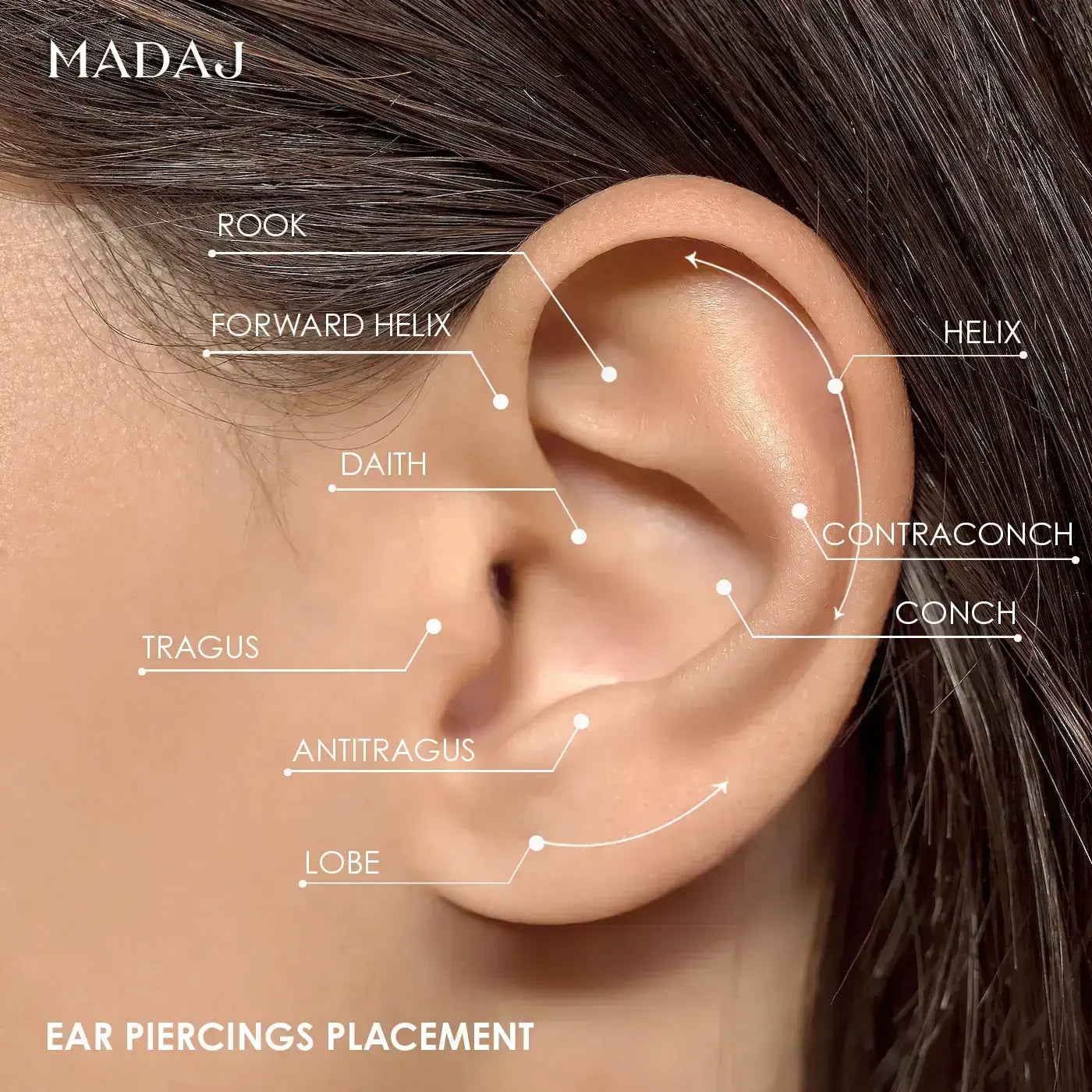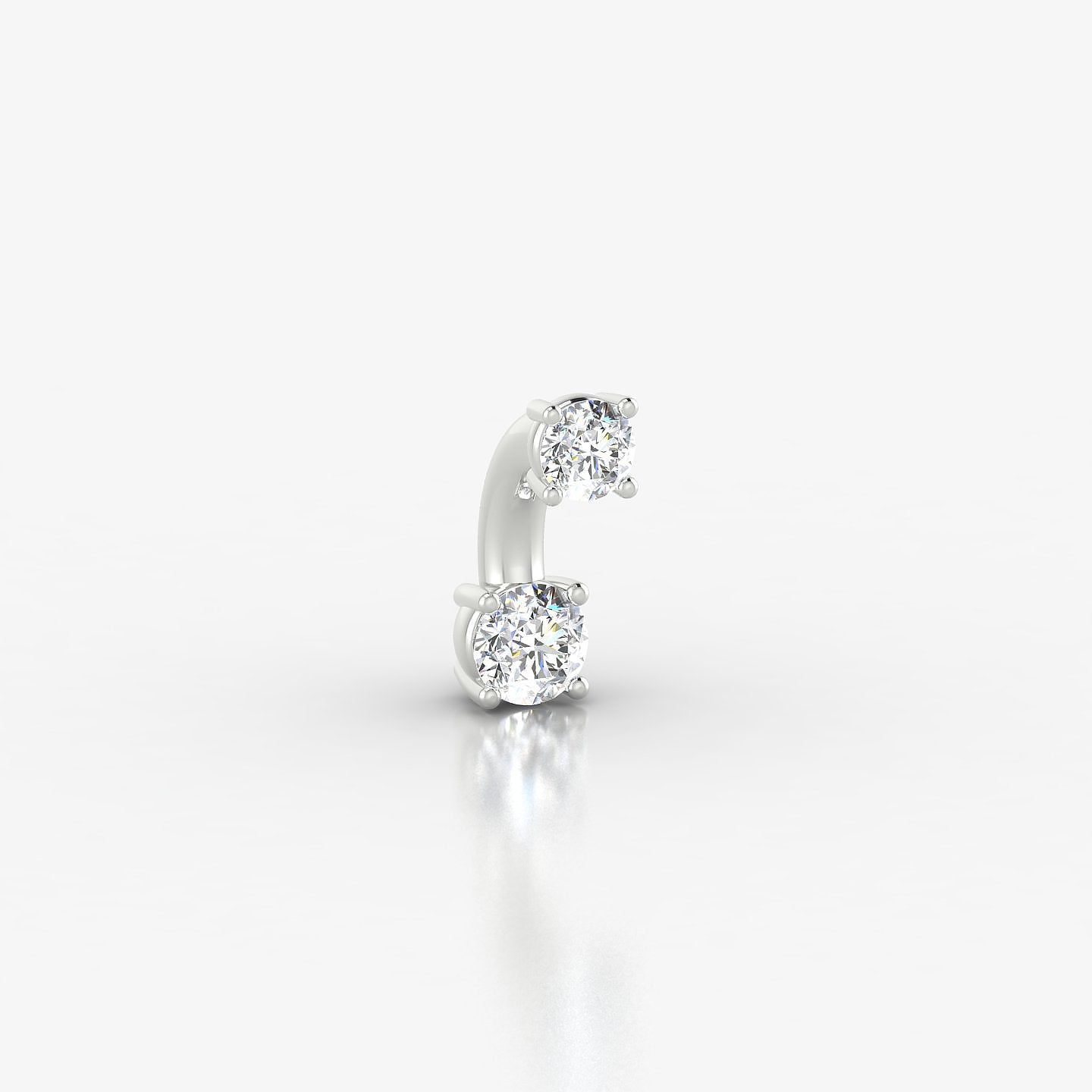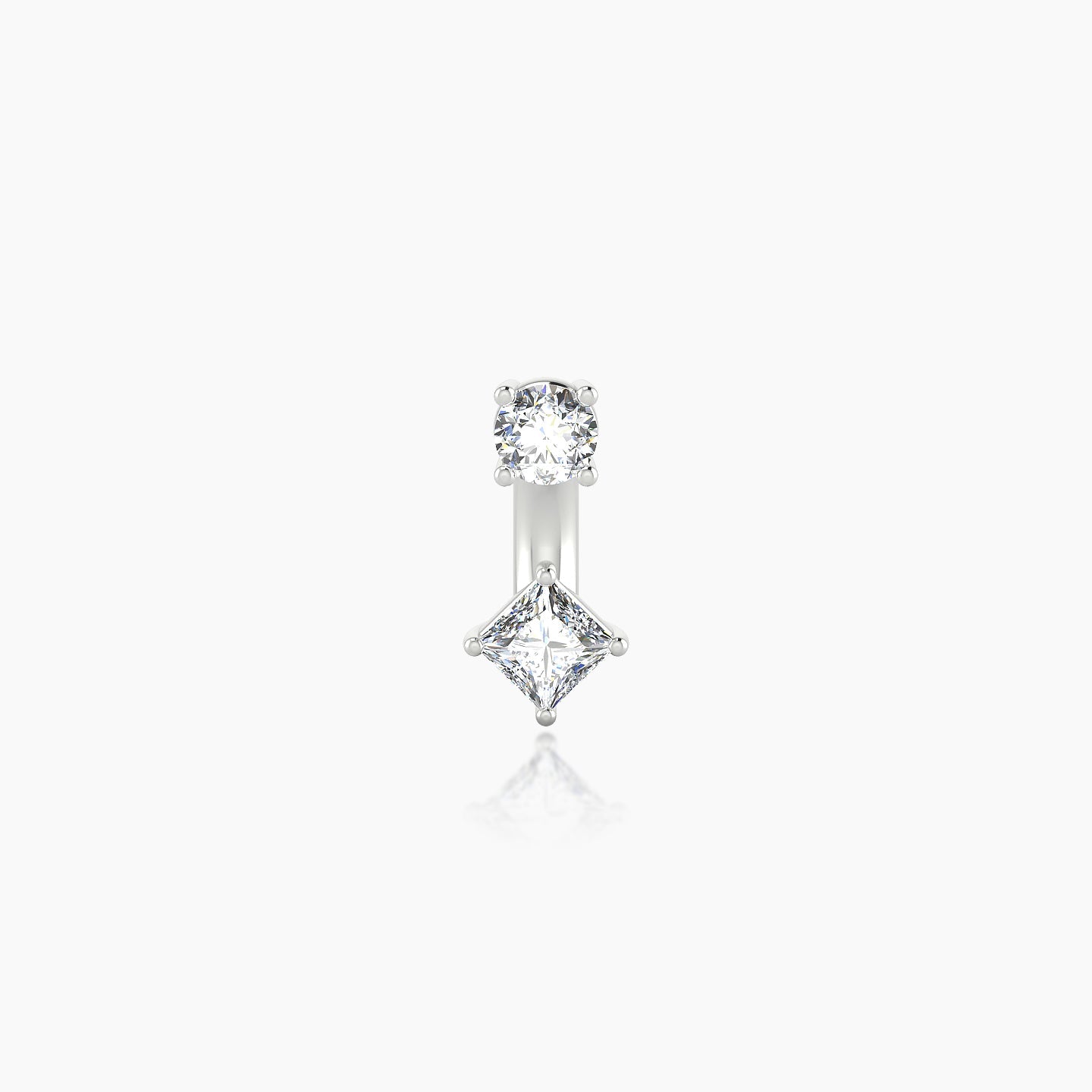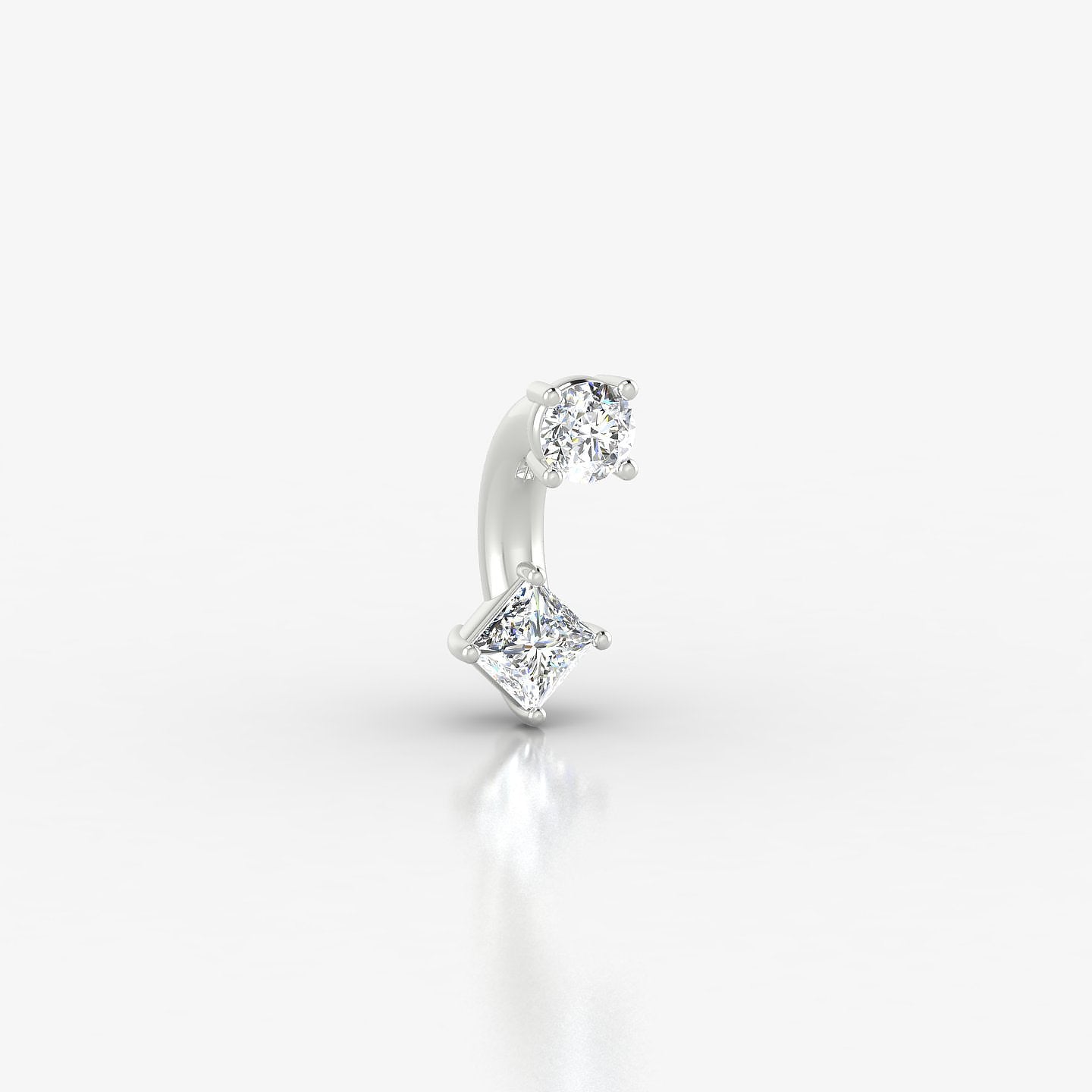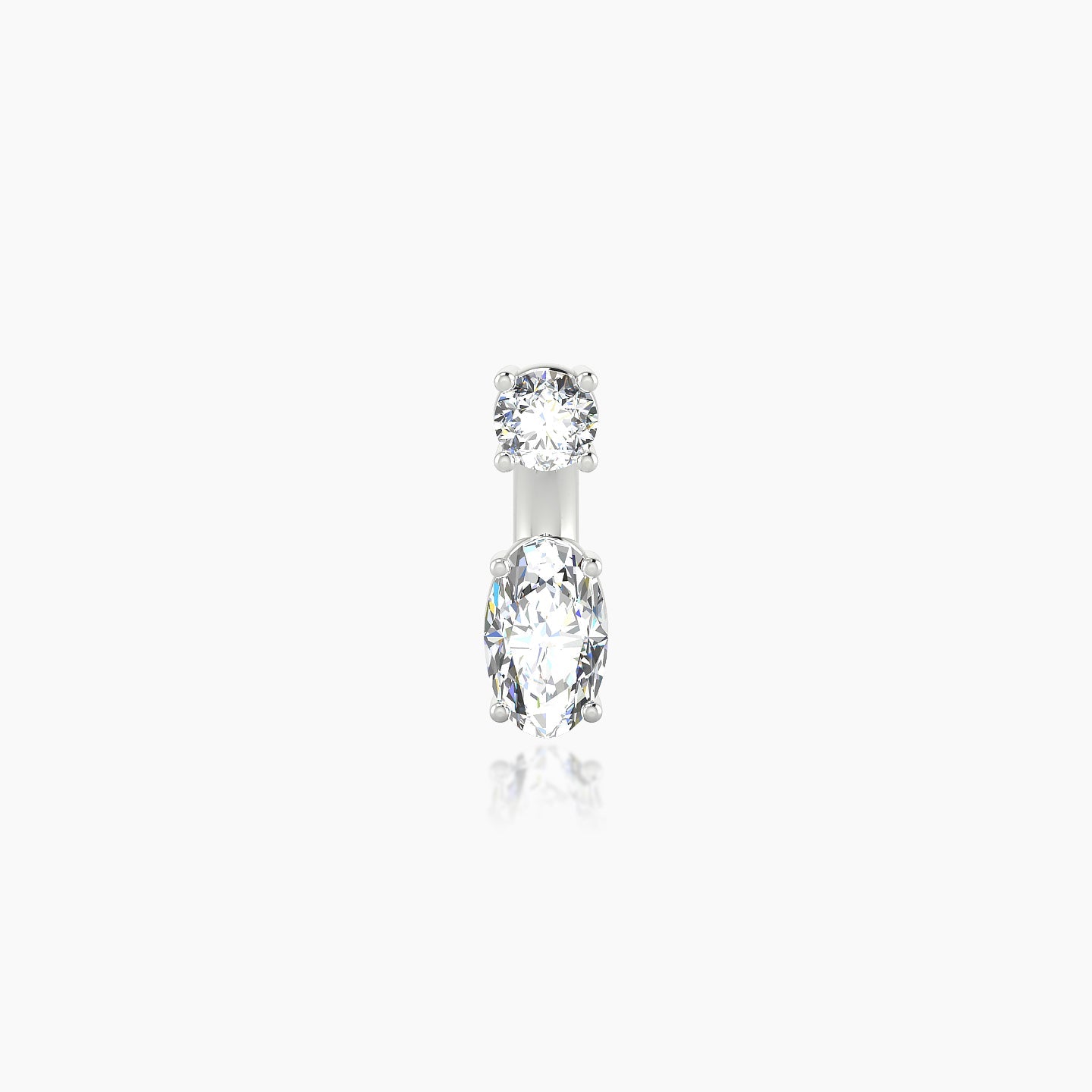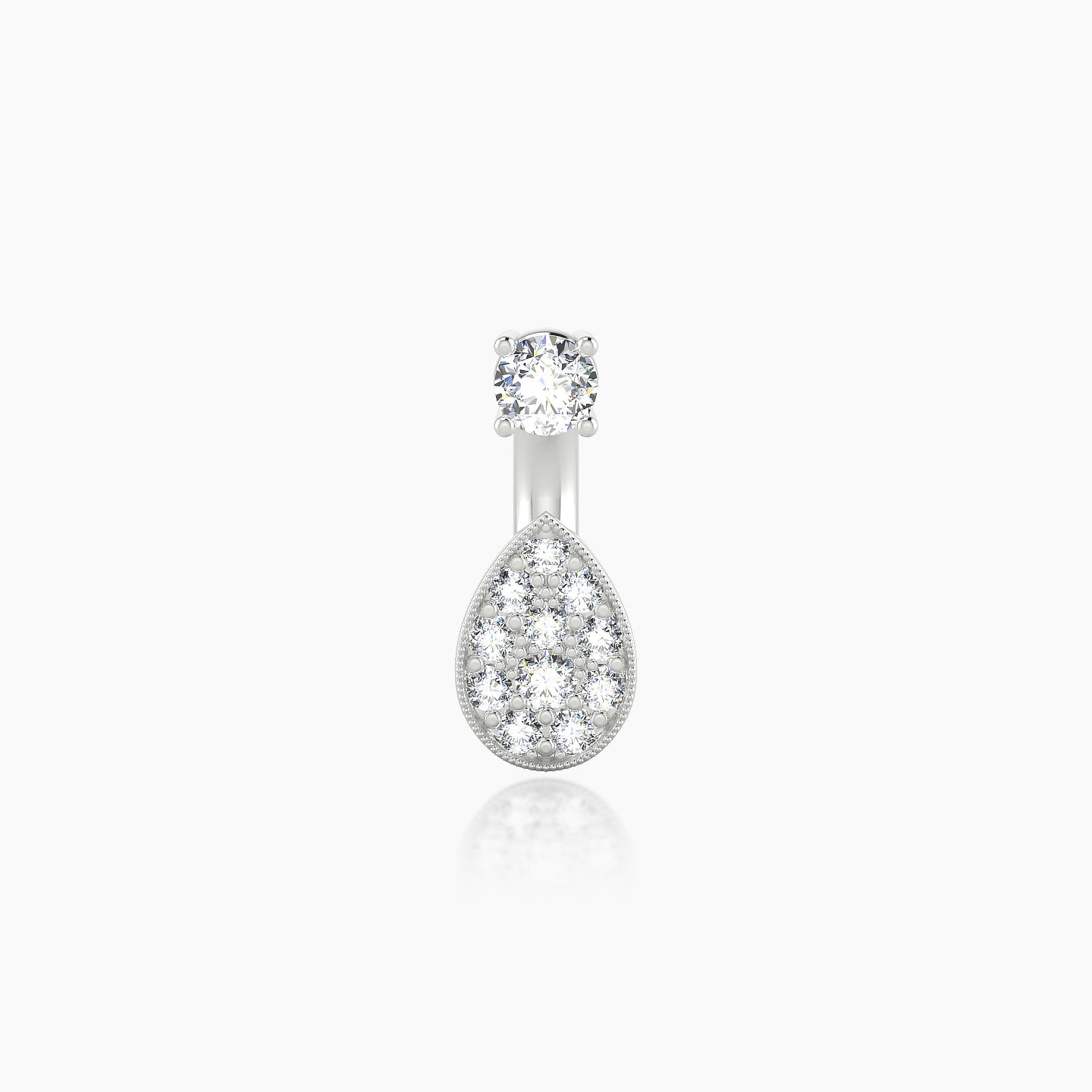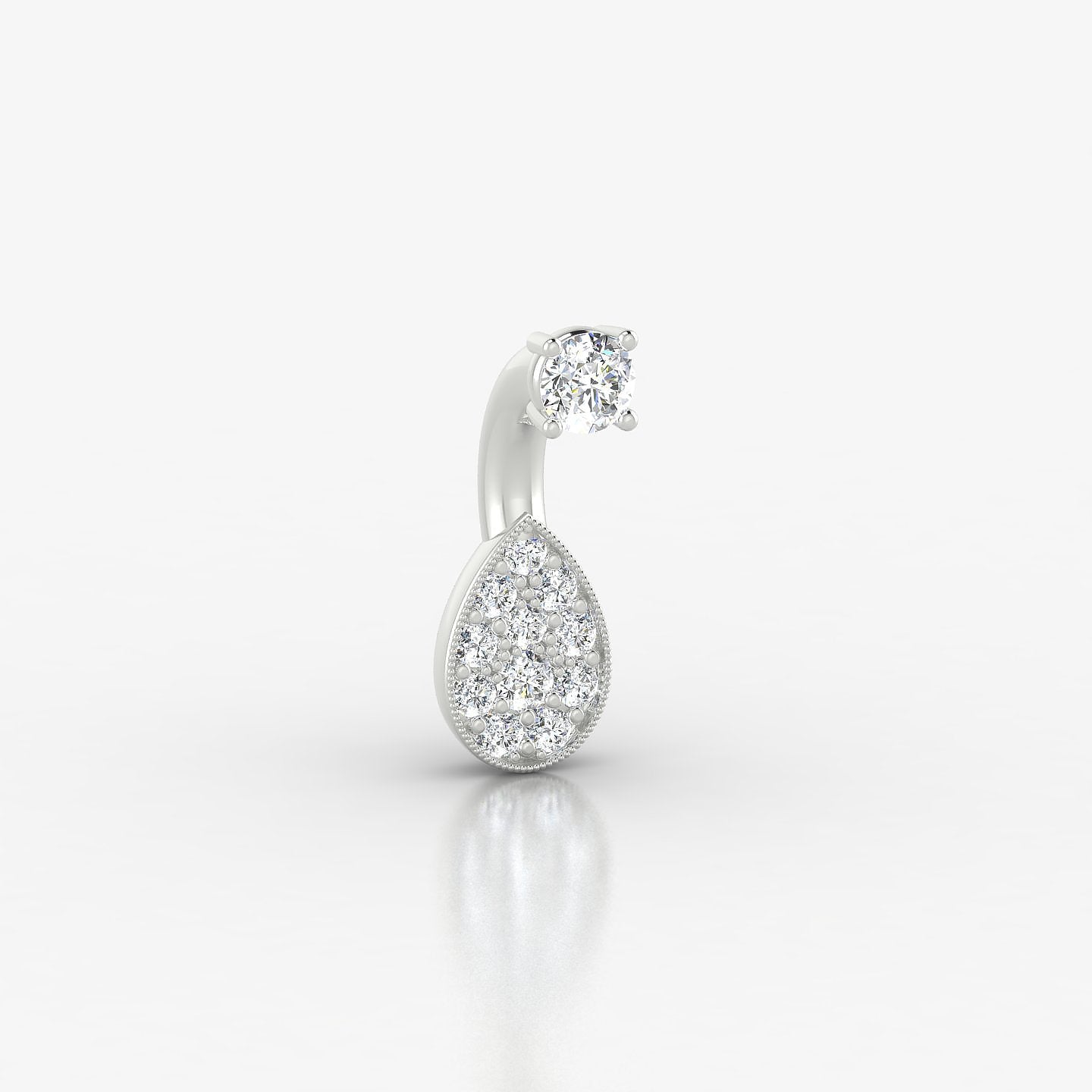Education
NAVEL PIERCING FULL GUIDE
Welcome to MADAJ Piercings. For a long time, belly piercing has been considered a stylish choice for those looking to add an aesthetic touch.
If you want to learn more or are considering this type of piercing, our guide is here for you. It covers all the important aspects of navel piercing, assisting you from the selection to the healing of your new jewelry.

NAVEL PIERCING PLACEMENT
When discussing the placement of a navel piercing, it's important to consider both aesthetic preferences and anatomical suitability.
Top rim navel piercing: This is the most common placement for a navel piercing. Its popularity stems from its visibility and the ease with which it can be adorned with various styles of jewelry.
A good candidate for a navel piercing has a pronounced upper rim, which allows for comfortable wear of the jewelry and reduces the risk of migration and rejection.
Bottom rim piercing: Less common than the top rim, the bottom rim can also be pierced, especially in individuals whose navel shape is more suited to this placement.
Among these two locations, there are various types of navel piercings, including:
- Standard navel piercing
- Reverse navel piercing
- Floating navel piercing
- Double navel piercing
- Horizontal navel piercing
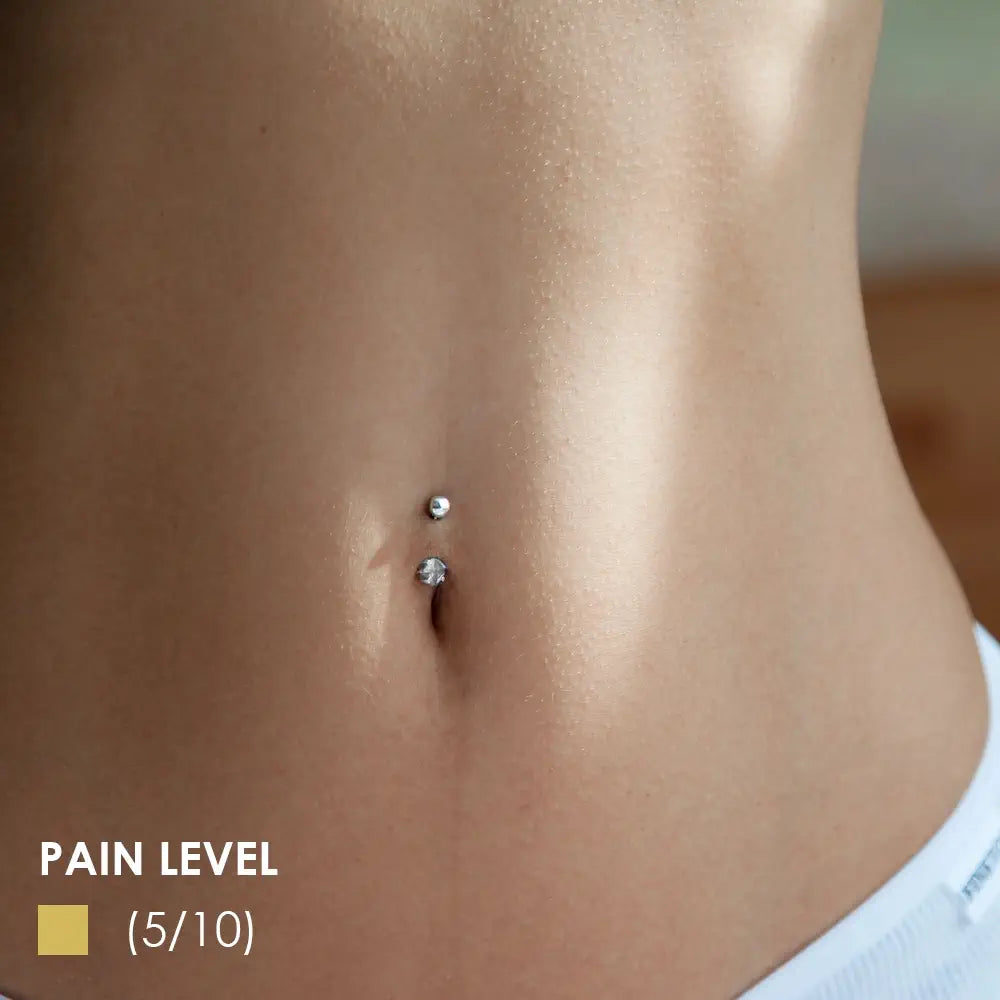
PAIN LEVEL OF NAVEL PIERCING
Pain Level of Navel Piercing: (5/10)
The navel piercing, also known as the belly button piercing, causes moderate pain due to the skin and tissues it goes through. The pain felt is generally brief and tolerable, although it can vary from person to person.
How can I reduce the pain felt during navel piercing?
There are solutions to minimize the pain during navel piercing, such as using anesthetic creams containing lidocaine (EMLA or generics). These creams are available in pharmacies with a prescription.
It is recommended to apply them around the navel area 30 minutes to 1 hour before the piercing.

TYPES OF NAVEL PIERCING
Standard Navel Piercing
Standard Navel Piercing Anatomy: Fits most body types with a sufficiently defined upper navel rim.
Standard Navel Piercing Jewelry: Curved barbells or captive rings.
Reverse Navel Piercing
Reverse Navel Piercing Anatomy: Ideal for those with a well-defined lower navel rim.
Reverse Navel Piercing Jewelry: Curved barbells or special rings that fit well under the navel rim.
Floating Navel Piercing
Floating Navel Piercing Anatomy: Perfect for individuals who do not have a navel deep enough for a standard piercing.
Floating Navel Piercing Jewelry: Straight or curved barbell with a decoration on the upper part that remains visible on the skin.
Double Navel Piercing
Double Navel Piercing Anatomy: Better suited for those with a wider or more spaced navel to accommodate two piercings.
Double Navel Piercing Jewelry: Two curved barbells or rings, depending on the orientation of the piercings.
Horizontal Navel Piercing
Horizontal Navel Piercing Anatomy: Requires a wide navel rim for comfortable and aesthetic horizontal placement.
Horizontal Navel Piercing Jewelry: Straight or curved barbell, or sometimes a specific horizontal piece.
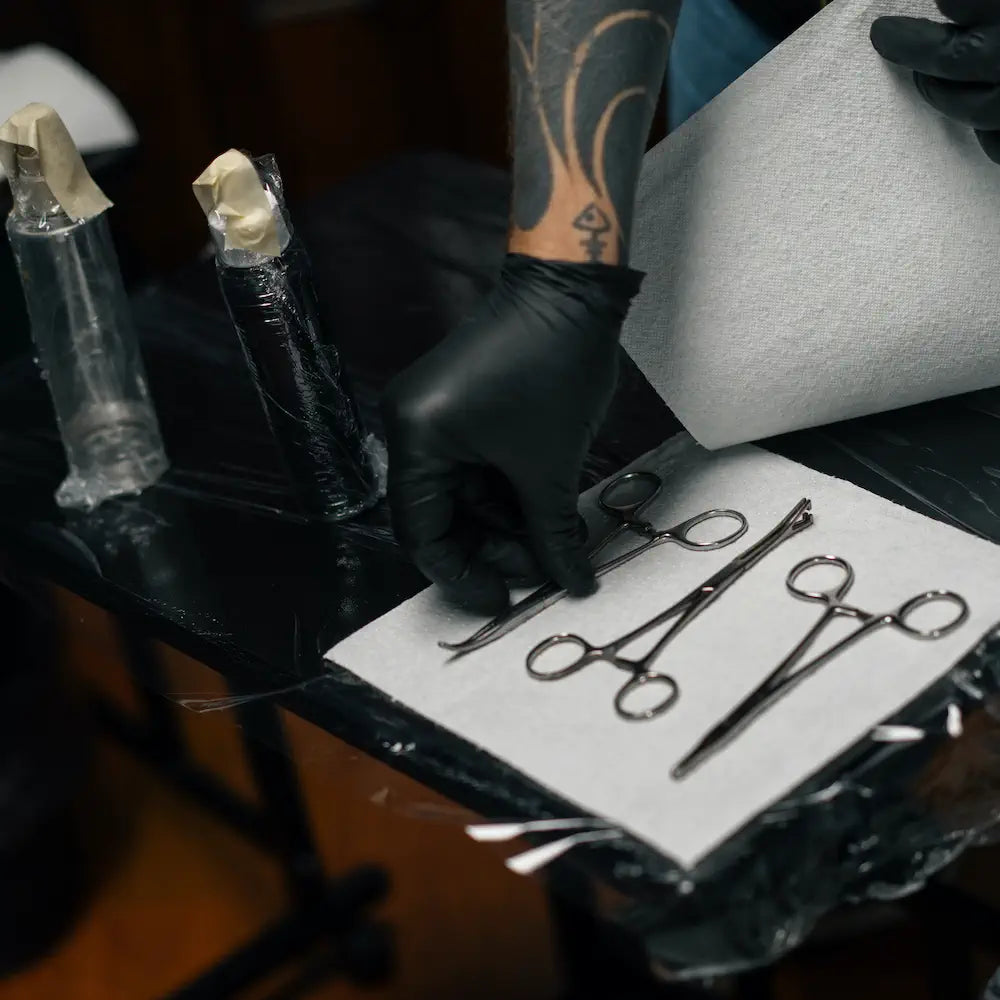
NAVEL PIERCING PROCEDURE
Consultation: Discuss your goals, select your navel jewelry, and receive aftercare instructions.
Preparation: The piercer clean and disinfect the navel area, then mark the piercing spot.
Piercing: A sterile needle is used to create the belly piercing, followed by the insertion of your belly button jewelry.
Aftercare: Regular cleaning your navel piercing with saline solution, avoid unnecessary touching, and keep the area dry.
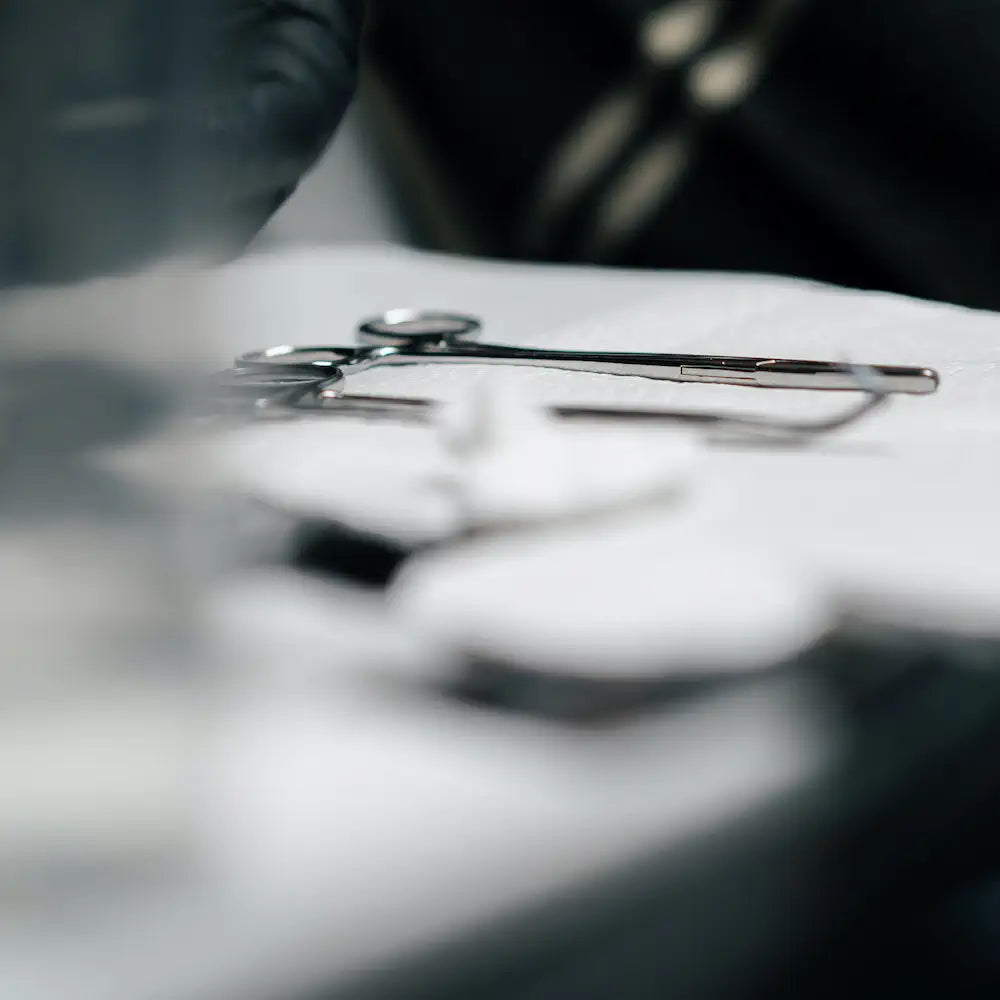
CLEANING INSTRUCTIONS FOR NAVEL PIERCING
Cleaning a belly button piercing properly is crucial for healing and preventing infections.
Here are simplified instructions:
Wash Your Hands: Always clean your hands thoroughly with soap and water before touching the navel piercing area.
Saline Solution: Use a saline solution (either store-bought or a homemade mix of 1/4 teaspoon non-iodized sea salt with 1 cup of warm distilled or bottled water) to clean the belly piercing.
Apply the Solution: Soak a clean gauze or paper towel in the saline solution and gently apply it to the navel pierced area. Alternatively, you can hold the area over a cup of the solution to soak directly for a few minutes.
Rinse: After soaking, gently rinse the belly area with clean water to remove any saline residue and pat dry with a clean, disposable paper towel. Avoid using cloth towels as they can harbor bacteria.
Avoid Over-cleaning: Cleaning the navel piercing 2-3 times a day is sufficient. Over-cleaning can irritate the skin and hinder the healing process.
No Twisting or Turning: Do not twist or turn the belly button jewelry during cleaning to avoid irritating the piercing.

HEALING TIME & PROCESS FOR NAVEL PIERCING
Navel piercings typically take 6 to 12 months to fully heal.
During this time, it's normal to experience some redness, swelling, and discharge. Healing progresses in stages, starting with initial healing, where the body starts to close the wound, followed by a maturation phase where the tissue strengthens around the jewelry.
Proper aftercare, including regular cleaning with saline solution and avoiding irritation, is crucial for a smooth healing process. Monitor the area for signs of infection and consult a professional if needed.
Discover Our

